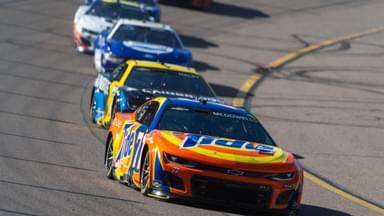The EV prototype that NASCAR developed and revealed in partnership with ABB back in July is currently doing rounds across the country to be on display for special events. The 1,300+ HP vehicle was not manufactured with the purpose of racing immediately, but rather to accumulate the learnings from all these years of racing development. Here’s a look at what makes it the pinnacle of stock car technology.
Advertisement
The Next Gen car is the best iteration of an in-use stock car that NASCAR has produced so far. The EV prototype shares many similarities with it.
It uses a slightly modified version of the Next Gen chassis. The changes are that the rear clip has been attached to it directly and that batteries can be loaded from the bottom. The prototype also has an elevated cage owing to the SUV-type body.
Some may notice that the center section is also different and that’s partly because the cage has been raised in order to accomodate that SUV body style. pic.twitter.com/NeYJhQtAnq
— Bozi Tatarevic (@BoziTatarevic) November 13, 2024
The suspension is the same as the one used in the Next Gen. However, forks are added to the bottom of the front shocks. This allows the driveshafts required for all-wheel drives to pass through.
The steering wheel is powered by an electric pump. This electro-hydraulic steering pump is shared with the current Cup Series car as well. It is also what is largely found in today’s street cars.
The racing brakes are also borrowed from the Next Gen but they’ve been upgraded to have regenerative braking capabilities. It uses the same 18X12 forged aluminum BBS wheels but has a special tire pressure monitoring system.
This system is facilitated by Goodyear, which cures the sensor into the tire during production. Interestingly, the prototype weighs 600 pounds more than the Next Gen.
The impressive gearbox of the NASCAR EV prototype
STARD supplies both the front and rear gearboxes which have limited-slip differentials installed in them. The front gearbox is coupled with a single motor while the rear is with two motors. The total output from the motors is 1,000 kilowatts.
This sheer power is what made the prototype race within a few tenths of the Next Gen car in Martinsville during a test. The car has different driving modes and the race trim’s output is set to 600 kilowatts, which would translate to over 800 HP. So, what’s the point of all this superior tech?
There are two goals to be achieved with it. First, to market it and enable projects that make race tracks more sustainable. Second, to study it and develop it further to develop a car that will someday in the future be worthy enough to replace the cars that are currently used.





